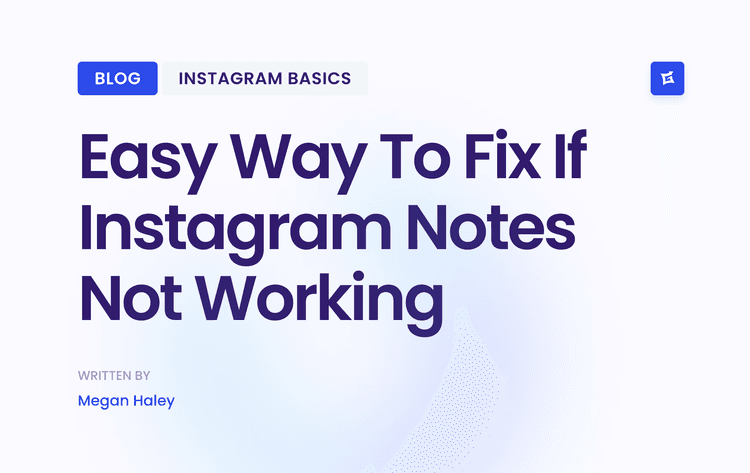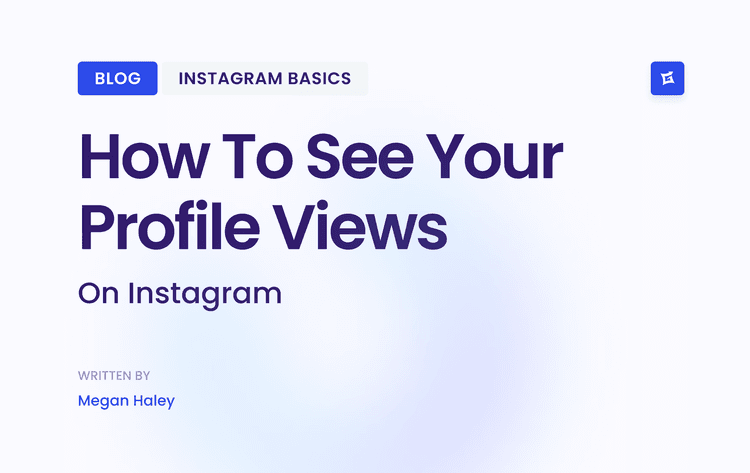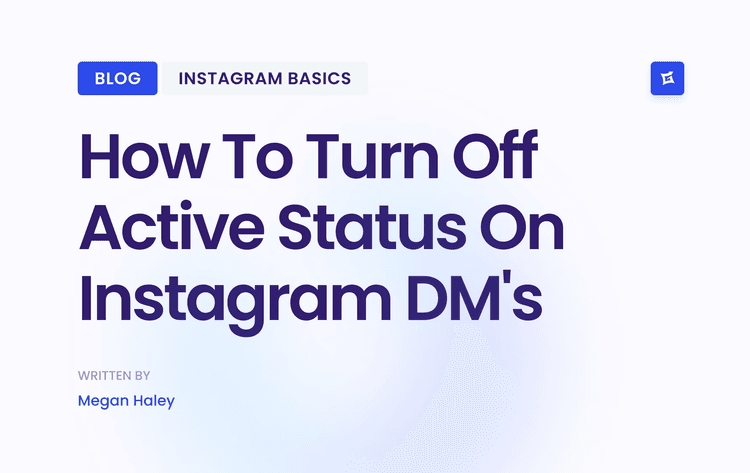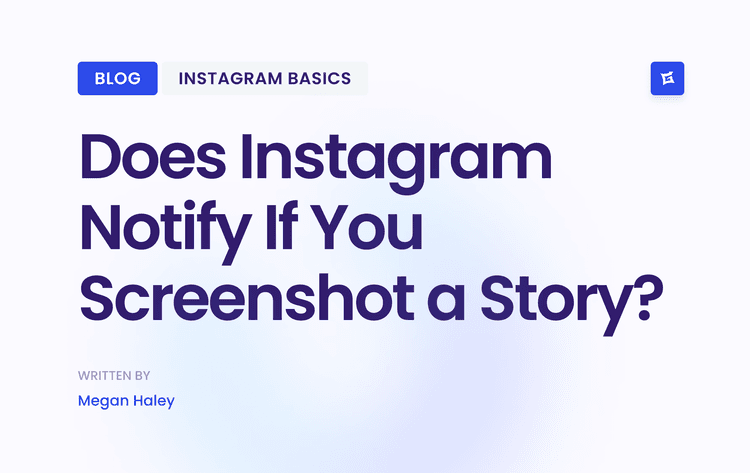Unlocking Instagram's Power: Balancing Business and Personal in 2025
1. Business Account Conversion Strategy
One of the most impactful decisions you can make regarding your Instagram account is switching from a personal account to a business account. This conversion strategy is crucial for anyone looking to leverage Instagram for professional purposes, be it a small business owner, a growing brand, or an influencer aiming to monetize their content. Transitioning unlocks a suite of features designed to scale up your Instagram marketing, providing access to invaluable analytics, targeted advertising opportunities, and streamlined communication channels. This shift signifies a move from casual posting to strategic brand building, opening doors to a more professional and data-driven approach.

This strategy involves navigating to your Instagram settings and selecting the option to switch to a business profile. Once converted, you gain access to features unavailable to personal accounts. These include Instagram Insights, providing detailed analytics on your audience demographics, post performance, and reach; the ability to run paid advertisements to expand your audience and target specific demographics; contact buttons for direct communication via email, phone, or directions; shopping features allowing you to tag products directly in your posts; category and industry identification for improved discoverability; and integration with auto-publishing tools for streamlined content scheduling. Learn more about Business Account Conversion Strategy for a deeper understanding of the different account types and their implications.
The advantages of making this switch are numerous. A professional appearance fosters credibility and trust with your audience, while data-driven decisions informed by Instagram Insights enable you to optimize your content strategy for maximum impact. Direct communication channels via contact buttons simplify customer interactions, and the expanded reach afforded by advertising capabilities allows you to connect with a wider audience. Seamless integration with Facebook Business Manager centralizes your social media management, providing a holistic overview of your brand's performance across platforms.
However, it's important to acknowledge the potential downsides. Some users report a decrease in organic reach after switching to a business account, and there’s inherently less privacy as your business information becomes publicly available. Managing a business account effectively requires more time and effort, and the Instagram algorithm may sometimes prioritize personal content over business posts.
Success stories abound, demonstrating the transformative power of this strategy. Glossier, for instance, began as a personal beauty blog before converting to a business account and cultivating a massive following of over 2.7 million users. Similarly, Gym Shark evolved from a personal passion project into a billion-dollar business, leveraging the power of a business account to connect with its target audience and build a global brand.
To maximize the benefits of a business account, ensure all profile fields are completed, including category, contact information, and location. Connecting to a Facebook Business Page unlocks the full suite of features, including advertising capabilities. Setting up automated responses for direct messages streamlines customer service, while regularly reviewing insights helps refine your content strategy based on performance data. Don't forget to update your business hours and information seasonally to maintain accuracy and relevance.
This strategy's significance is underscored by its widespread adoption since Instagram introduced business profiles in 2016. Major brands like Nike, Starbucks, and Apple were early adopters, demonstrating the value of these features for established businesses and emerging brands alike. If you’re serious about leveraging Instagram for business growth, converting to a business account is a fundamental step towards building a professional, data-driven, and impactful presence.
2. Content Differentiation Framework
One of the most effective strategies for managing the often blurry lines between business and personal Instagram is the Content Differentiation Framework. This approach emphasizes developing distinct content strategies for each account type, aligning with the specific objectives of each. For business accounts, the focus is on professional branding, lead generation, and ultimately, sales. Personal accounts, on the other hand, prioritize lifestyle content, personal connections, and community building. The key is maintaining authenticity across both while clearly separating their purposes.

This framework deserves a place on this list because it provides a structured approach to navigating the complexities of managing a personal brand alongside a business identity on Instagram. It offers a clear path to maximizing the potential of both platforms without alienating either audience. This method is built upon several key features: a distinct visual aesthetic for each account, content calendars with potentially different posting frequencies, separate hashtag strategies tailored to personal and business content, varying caption styles and tones of voice, and purpose-specific storytelling approaches.
For example, Gary Vaynerchuk expertly leverages this framework. His @garyvee account focuses on business advice, speaking engagements, and book promotions, maintaining a professional and motivational tone. Meanwhile, @garyveethechef showcases his personal passion for cooking, offering a glimpse into his life outside of the business world. Similarly, Emily Weiss (@emilyweiss) keeps her personal life separate from her business venture, Glossier (@glossier), allowing her to connect with her audience on different levels. Chef Gordon Ramsay also demonstrates this distinction with @gordongram (personal life and behind-the-scenes glimpses) and @gordonramsayrestaurants (focused on his business ventures).
Pros:
Prevents audience confusion about brand identity: Clear separation ensures your audience understands the purpose of each account.
Allows targeting different audience segments effectively: Tailored content resonates better with specific demographics.
Creates clear boundaries between personal and professional life: Maintains a healthy balance and prevents burnout.
Enables more focused marketing campaigns: Streamlined messaging enhances campaign effectiveness.
Facilitates better performance tracking for business objectives: Isolating business activity simplifies analytics and ROI measurement.
Cons:
Requires more time and resources to manage separate content streams: Developing and executing two distinct strategies requires additional effort.
Can lead to disconnected brand experience if poorly executed: Inconsistent branding across accounts can confuse audiences.
May dilute overall engagement across multiple accounts: Splitting your audience can decrease individual account engagement metrics.
Potential for inconsistent messaging: Difficulty maintaining a unified brand voice across platforms.
Tips for Implementing the Content Differentiation Framework:
Visual Consistency: Use a consistent color palette for business content that aligns with your brand guidelines. Create templates for business posts to maintain visual consistency and save time.
Humanizing Your Business: Show the human side of your business through behind-the-scenes content on your business account, while reserving deeply personal stories for your personal account unless they directly relate to your brand values.
Tailored Content: Test different content types on each account to determine what resonates with each audience. Analyze engagement metrics to refine your approach.
Strategic Storytelling: Craft narratives that align with the specific purpose of each account. Use your personal account to build genuine connections and your business account to establish expertise and drive conversions.
This approach is particularly beneficial for influencers seeking organic growth, small businesses and startups establishing their online community, brands aiming to boost social media engagement, content creators across various niches, and marketing agencies and professionals managing multiple clients. By implementing the Content Differentiation Framework effectively, you can leverage the power of Instagram for both personal branding and business growth while maintaining authenticity and clarity for your audience. This strategy, popularized by social media strategists like Jasmine Star, Jenna Kutcher, and Sue B. Zimmerman, provides a roadmap for navigating the "business vs personal instagram" dilemma effectively.
3. Engagement Optimization Strategy
A crucial differentiator between a thriving Instagram followers and a stagnant one lies in a robust engagement optimization strategy. This approach focuses on tailoring engagement tactics for business versus personal Instagram accounts to maximize relationship-building while adhering to each account type's objectives. For business accounts, engagement is structured around community building and customer service, providing valuable feedback channels and humanizing the brand. Personal accounts, on the other hand, leverage authentic interactions for relationship development, fostering genuine connections with followers. This distinction is paramount for anyone looking to leverage Instagram effectively, whether for personal branding or business growth.

This strategy deserves a place on this list because effective engagement is the engine of organic growth on Instagram. It signals to the algorithm that your content is valuable, leading to increased visibility and reach. Without a dedicated engagement strategy, even the most compelling content can get lost in the noise.
Features of an Effective Engagement Optimization Strategy:
Response Time Frameworks: Establish different response time expectations for business and personal accounts. Aim for within 24 hours for business accounts and within 12 hours for personal brands to demonstrate responsiveness.
Structured Comment Management for Business: Implement systems for tracking, prioritizing, and responding to comments on business accounts, ensuring no customer query goes unanswered. This could include using social media management tools or assigning team members specific responsibilities.
Community Management Protocols: Define clear guidelines for interacting with your community, including brand voice, acceptable topics, and crisis management procedures.
Engagement Pods Utilization: Strategically leverage engagement pods (groups dedicated to supporting each other's content) for business accounts to boost initial visibility, while exercising caution on personal accounts to avoid appearing inauthentic.
Question Strategies: Develop engaging questions to spark conversations and encourage interaction with your content. This can range from simple polls on Stories to thought-provoking questions in captions.
Pros:
Builds stronger community around brand purpose and values.
Creates authentic connections that increase customer loyalty and advocacy.
Improves algorithm performance through active engagement, leading to increased reach.
Provides valuable customer feedback channels for product development and improvement.
Humanizes brands through consistent, personalized interaction.
Cons:
Time-intensive, especially for rapidly growing business accounts.
Difficult to scale personal-level engagement for large brands without dedicated community management teams.
Risk of appearing inauthentic if responses seem automated or generic.
Challenging to maintain consistency in engagement style and tone across multiple team members.
Examples of Successful Implementation:
Wendy's: Known for their witty and personalized responses to comments, creating viral engagement moments and solidifying their brand personality.
Airbnb: Consistently responds to user-generated content, fostering a sense of community and showcasing real-life experiences with their brand.
GoPro: Leverages the #GoPro hashtag to engage with user content and build brand advocacy by reposting captivating visuals.
Actionable Tips:
Set aside dedicated time blocks for engagement daily.
Create response templates for common business queries while keeping personal replies unique and genuine.
Acknowledge customer service issues publicly but resolve them privately through direct messages.
Use the saved replies feature for business accounts to efficiently address frequently asked questions, but avoid this for personal accounts to maintain authenticity.
Engage with industry peers through your business account to build your network and expand your reach.
Popularized By: Social media expert Mari Smith, community management specialist Erica Campbell, and brands like Glossier and Gymshark, known for their exceptional engagement strategies.
By understanding the nuances of engagement for business vs personal Instagram and implementing a strategic approach, you can cultivate a thriving online community that drives meaningful connections and achieves your desired outcomes.
4. Story and Reels Strategic Allocation
One key aspect of managing the "business vs personal Instagram" dilemma is strategically allocating your Story and Reels content. This method involves a systematic approach to distributing ephemeral and short-form video content across your business and personal Instagram accounts to maximize impact and cater to different audience expectations. It's crucial for anyone trying to balance a professional online community with a personal one.
This strategy works by first categorizing your content and then determining which format (Story or Reel) and which account (business or personal) best suits each piece. Think of it like curating two separate channels, each with its own distinct voice and purpose. This approach helps avoid confusing your audiences and allows you to tailor your content more effectively.
Features of a Robust Story and Reels Strategy:
Content categorization system: Develop clear categories for your content (e.g., product demos, behind-the-scenes, daily life, tutorials).
Story highlights organization framework: Curate Story highlights on your business profile to showcase key information and create a polished look.
Temporal posting strategy: Optimize posting times for both Stories and Reels based on when your target audience is most active.
Interactive elements usage: Leverage polls, questions, quizzes, and sliders to boost engagement.
Content production quality guidelines: Establish different quality standards for business and personal content, ensuring professionalism where needed while retaining authenticity on your personal account.
Pros:
Maximizes the potential of Instagram's most engaging features.
Creates consistent viewer expectations on both accounts.
Leverages algorithm preferences for video content, increasing visibility.
Drives higher engagement through interactive elements.
Builds anticipation through consistent formatting and themes.
Cons:
Requires higher production capabilities for business content.
Can be time-intensive to create multiple formats and manage two accounts.
Potential for content burnout without proper planning and scheduling.
Maintaining consistent quality standards can be challenging.
Examples of Successful Implementation:
Chipotle: Uses business Reels for polished product promotions and limited-time offers but shares behind-the-scenes glimpses of company culture and employee life on Stories.
Huda Kattan: This beauty influencer expertly separates product tutorials and beauty tips (business) from her daily life and personal musings (personal) across both Stories and Reels.
Nike: Reserves high-production, campaign-focused video content for Reels while using Stories for in-the-moment event coverage and athlete spotlights.
Actionable Tips:
Business Stories: Use them for time-sensitive announcements, daily operations updates, Q&As, and behind-the-scenes glimpses.
Business Reels: Create polished, planned Reels for educational content, product showcases, and brand storytelling.
Personal Stories: Share authentic moments from your daily life, hobbies, and interests.
Personal Reels: Experiment with trending audio, fun filters, and creative content formats.
Maintain higher production quality for business content (better lighting, editing, etc.) while keeping personal content authentic and relatable.
Set up saved Story templates for consistent business branding.
Create a Story content calendar for your business account while allowing flexibility for personal account posting.
Test Story vs. Reels performance for different content types and adjust your strategy accordingly. Learn more about Story and Reels Strategic Allocation
This strategy deserves a place on this list because it addresses a core challenge of managing both business and personal Instagram accounts: content overlap and audience confusion. By strategically allocating content, you can optimize your reach and engagement on both platforms, catering to the specific expectations of each audience. Social media strategists like Rachel Pedersen and Tyler J. McCall, along with brands like Sephora and National Geographic, have popularized this approach, demonstrating its effectiveness for diverse audiences and niches. By following these tips, influencers, small businesses, and brands can successfully leverage Stories and Reels to upgrade their identity on Instagram.
5. Cross-Promotion Integration Strategy
When navigating the often blurred lines between business vs personal Instagram, a Cross-Promotion Integration Strategy offers a powerful approach to leverage the strengths of both. This method focuses on strategically connecting your personal and business Instagram accounts to expand your reach while maintaining appropriate boundaries. It involves creating a systematic framework for cross-referencing, sharing, and integrating content between accounts, respecting the distinct purposes of each. This strategy deserves its place on this list because it offers a unique way to humanize your brand and build trust with your audience, ultimately driving engagement and growth across both platforms.
How it Works:
A Cross-Promotion Integration Strategy isn't about randomly posting business content on your personal profile. It's about crafting a deliberate plan to connect with your audience on multiple levels. This involves:
Account tagging and mention protocols: Establish clear guidelines for when and how to tag or mention your business account on your personal profile, and vice versa.
Content sharing frameworks: Determine what types of content are suitable for cross-promotion. This might include behind-the-scenes glimpses of your business, product features integrated into your lifestyle, or sharing customer testimonials.
Founder/employee advocacy systems: Encourage employees, particularly founders, to authentically integrate brand messaging into their personal content.
Collaborative content calendars: Align content planning across both accounts to create synergistic campaigns and maximize impact.
Audience migration techniques: Strategically guide followers from your personal account to your business account (and sometimes vice versa) through compelling calls to action and valuable content.
Examples of Successful Implementation:
Several high-profile individuals have effectively implemented cross-promotion strategies:
Sara Blakely (Spanx): Blakely frequently features Spanx products within her personal lifestyle content, offering a glimpse into the brand's values and her personal connection to it, while maintaining separate business accounts for core brand messaging.
Dwayne "The Rock" Johnson (Teremana Tequila): Johnson masterfully weaves the story of Teremana into his personal narrative, building an emotional connection with his audience and promoting the brand authentically.
Emily Weiss (Glossier): Weiss occasionally references Glossier on her personal account, providing insights into the brand's philosophy and connecting with her audience on a more personal level while keeping distinct content strategies.
Pros:
Expands reach to new audience segments, particularly those who connect with you personally.
Humanizes business brands through personal connections, building trust and rapport.
Creates multiple touchpoints with potential customers, reinforcing brand awareness.
Leverages personal trust to build business credibility and drive conversions.
Maximizes content value across platforms by repurposing and extending its lifespan.
Cons:
Risk of audience confusion if overused or implemented inconsistently.
Potential privacy concerns for personal accounts if boundaries are not clearly defined.
Can dilute brand messaging if poorly executed, leading to a loss of focus.
May create an expectation of regular cross-promotion, placing pressure on content creation.
Tips for Effective Cross-Promotion:
Limit cross-promotion to 1-2 times weekly to avoid audience fatigue.
Use the 'Collab' feature for important business announcements that benefit from personal endorsement.
Create 'founder story' content that naturally bridges personal and business narratives.
Use Stories for lightweight cross-promotion rather than permanent feed posts.
Develop clear guidelines for when personal accounts should reference business accounts and vice versa.
Consider creating separate hashtags for cross-promotional content to track its effectiveness.
Popularized By:
This strategy has been championed by leading figures in the digital marketing world, including:
Amy Porterfield (Digital Marketing Expert)
Jasmine Star (Social Media Strategist)
Gary Vaynerchuk (Entrepreneur and Influencer)
By implementing a well-defined Cross-Promotion Integration Strategy, influencers, small businesses, and brands can effectively bridge the gap between business vs personal Instagram, fostering genuine connections, expanding their reach, and driving meaningful business growth.
6. Audience Segmentation and Targeting Approach
A crucial aspect of managing both a business and personal Instagram account is understanding the nuances of business vs personal Instagram and tailoring your content accordingly. This leads us to the critical strategy of Audience Segmentation and Targeting Approach. This method involves strategically dividing your audience into distinct groups for your business and personal Instagram accounts. This allows you to create highly relevant content and adopt engagement approaches specific to each account type, ultimately maximizing growth and conversion opportunities. Why does this deserve a place on this list? Simply put, it's the cornerstone of effective communication and growth on the platform, particularly when juggling dual identities.
This strategy hinges on understanding the demographic, psychographic, and behavioral differences between your audiences. For instance, your business account might target professionals interested in your industry, while your personal account connects with friends, family, and followers interested in your personal life and hobbies. Learn more about Audience Segmentation and Targeting Approach to delve deeper into understanding your audience insights.
Features of this approach include:
Audience persona development: Creating detailed profiles representing the ideal follower for each account.
Target demographic analysis frameworks: Utilizing tools and methods to analyze the age, location, interests, and other demographic data of your followers.
Behavioral analytics integration: Tracking follower activity, such as likes, comments, shares, and saves, to understand content preferences.
Content preference mapping: Identifying the types of content that resonate with each audience segment.
Engagement pattern tracking: Analyzing when and how each audience segment interacts with your content.
Custom audience development for advertising: Creating tailored advertising campaigns targeting specific audience segments based on demographics, interests, and behaviors.
Pros:
Creates highly relevant content: Addresses the specific needs and interests of each audience, increasing resonance and value.
Improves engagement rates: Targeted messaging fosters stronger connections and encourages interaction.
Enables more effective advertising spend allocation: Focuses budget on reaching the most receptive audience for your products or services.
Builds stronger connections with ideal customers: Fosters loyalty and advocacy by delivering personalized experiences.
Prevents content that alienates either audience segment: Avoids posting content on one account that might not be appropriate or interesting for the other audience.
Cons:
Requires sophisticated data analysis capabilities: Effectively segmenting and targeting requires the ability to interpret data and draw actionable insights.
May limit broader appeal in early growth stages: Focusing too narrowly on specific segments can hinder initial audience growth.
Can create ‘echo chamber’ effects without careful planning: Overly targeted content can limit exposure to diverse perspectives and stifle growth.
Needs regular updating as audience preferences evolve: Audience interests and behaviors change over time, requiring ongoing analysis and adjustments.
Examples:
Fitness influencer Kayla Itsines successfully segments her business content (workout programs and fitness apparel) from her personal content (family life and travel).
Gary Vaynerchuk targets entrepreneurs with business advice and motivational content on his business account, while engaging a broader audience with personal anecdotes and inspirational messages on his personal profile.
Kylie Jenner strategically separates her Kylie Cosmetics brand (product-focused content for makeup enthusiasts) from her personal account (lifestyle-focused content for a wider audience).
Actionable Tips:
Conduct quarterly audience analysis using Instagram Insights: Gain valuable data on demographics, interests, and behavior.
Create specific content pillars for each identified audience segment: Develop themes and topics tailored to each group's interests.
Test content preferences using A/B testing on Stories: Experiment with different content formats and messaging to identify what resonates best.
Develop separate hashtag strategies targeting each audience segment: Use relevant hashtags to reach the right audience for each account.
Schedule content based on when each audience segment is most active: Optimize posting times to maximize visibility and engagement.
Build separate saved audience segments for advertising campaigns: Tailor your ad targeting to reach specific customer groups.
This approach, popularized by digital marketing strategists like Neil Patel, social media expert Mari Smith, and data-driven marketers like Avinash Kaushik, is essential for anyone managing both personal and business Instagram accounts. By understanding the business vs personal Instagram dynamic and implementing these strategies, you can cultivate stronger connections with your audience, boost engagement, and achieve your goals on both platforms.
7. Monetization Channel Diversification
When comparing business vs personal Instagram, a crucial aspect to consider is monetization. Monetization channel diversification is a key strategy for maximizing your earning potential across both account types. This method involves developing distinct revenue generation approaches for your business and personal Instagram accounts, creating a framework for implementing, testing, and optimizing different monetization methods appropriate for each. This allows you to tap into various income streams while maintaining audience trust and adhering to platform guidelines.
This approach recognizes the fundamental difference between business vs personal Instagram. Your business account serves as a direct storefront, ideal for showcasing and selling products or services. Your personal account, on the other hand, fosters a more intimate connection with your audience, making it perfect for affiliate marketing, sponsored content, and building influencer partnerships.
Features of Monetization Channel Diversification:
Revenue stream identification and prioritization: Determine which revenue streams align best with each account type (e.g., direct sales for business, affiliate marketing for personal).
Conversion pathway design by account type: Tailor the customer journey for each platform, optimizing for different conversion goals.
Affiliate vs. direct selling frameworks: Establish clear strategies for managing affiliate partnerships and direct product sales.
Sponsored content guidelines: Develop transparent disclosure practices for sponsored posts on both accounts.
Product integration approaches: Strategically weave product mentions and promotions into your content without being overly promotional.
Call-to-action optimization: Experiment with different call-to-action phrases and formats to maximize conversions on each platform.
Pros:
Creates multiple income streams across platforms.
Matches monetization approaches to audience expectations, fostering trust.
Reduces dependency on a single revenue channel, mitigating risk.
Enables testing of different conversion approaches.
Maintains appropriate boundaries for each account type.
Cons:
Requires managing multiple business relationships.
More complex tracking and attribution needs.
Potential dilution of focus across revenue streams.
May require different content production capabilities.
Examples:
Huda Kattan: Effectively leverages her personal brand for sponsored content while driving product sales through her Huda Beauty business account. This exemplifies a balanced approach to business vs personal Instagram.
Pinch of Yum: This food blogger strategically separates cookbook sales (business account) from affiliate kitchen tool recommendations (personal account), respecting audience expectations on each platform.
Pat Flynn: Uses his personal account for authentic affiliate marketing while promoting his own products and courses through dedicated business accounts.
Tips for Implementation:
Reserve direct product selling primarily for business accounts.
Use personal accounts for authentic affiliate recommendations and influencer partnerships.
Create separate tracking links for each account to measure conversion effectiveness.
Implement Instagram Shopping features for business accounts while using link-in-bio tools for personal accounts.
Develop clear disclosure practices for sponsored content on both account types.
Test different call-to-action approaches and optimize based on conversion data.
Popularized By:
Marketing strategist Amy Porterfield, affiliate marketing expert Pat Flynn, entrepreneur Russell Brunson, and Instagram monetization specialist Elise Darma all advocate for diversified income streams, recognizing the distinct opportunities offered by business vs personal Instagram.
Monetization channel diversification deserves a place on this list because it provides a strategic framework for maximizing revenue potential across your Instagram followers. By understanding the nuances of business vs personal Instagram and tailoring your monetization strategies accordingly, you can build a sustainable and thriving online business while fostering genuine connections with your audience.
8. Brand Voice Bifurcation Framework
Managing your identity on Instagram can feel like juggling two distinct personalities – your professional brand and your authentic self. The Brand Voice Bifurcation Framework tackles this challenge head-on, providing a structured approach to navigating the often blurry lines between business vs personal Instagram. This strategy involves intentionally creating separate, yet complementary, communication styles, tones, and even "personalities" for your business and personal Instagram accounts. This allows you to connect authentically with your audience on both fronts while maintaining a cohesive brand identity.
This framework is especially relevant in today's social media landscape where audiences crave authenticity and connection. A clearly defined voice for both your personal and business accounts helps establish trust and clarity, which are crucial for organic growth and engagement.
How it Works:
The core of this framework lies in developing a robust system that defines and differentiates the voice characteristics of each account. This includes:
Voice Characteristic Definition System: Identify 5-7 key traits that define the voice of each account. For your business, this might be professional, informative, and solution-oriented. Your personal account could be humorous, relatable, and behind-the-scenes focused.
Caption Templates and Frameworks: Develop templates to maintain consistency, especially for your business account. These frameworks help multiple team members create content that aligns with the defined brand voice.
Communication Style Guides: Document preferred language, grammar usage, and overall communication style for both accounts.
Language Pattern Differentiation: Consciously use distinct vocabulary and phrasing on each account to reinforce their unique identities. Your business account may use industry-specific jargon, while your personal account employs more casual language.
Personality Trait Mapping: Consider mapping specific personality traits to each account (e.g., playful for personal, authoritative for business).
Response Tone Protocols: Define the appropriate tone for responding to comments and messages on both accounts.
Examples:
Several prominent figures effectively employ this strategy for their business vs personal Instagram account:
Elon Musk: Known for his often irreverent and outspoken personal Twitter (which often overlaps with his Instagram identity), his communication style contrasts sharply with the polished and technically focused voice of Tesla's official account.
Chef Jamie Oliver: Jamie's personal Instagram showcases his casual, enthusiastic personality, while his restaurant brands maintain a more refined and sophisticated tone.
Emily Weiss (Glossier): Emily cultivated a conversational and relatable personal brand, distinct from Glossier's minimal, community-focused brand voice.
Pros:
Creates clear distinction between personal and professional communications.
Allows for context-appropriate formality levels.
Enables multiple team members to maintain consistent brand voice.
Helps audiences differentiate between the founder/individual and the company.
Facilitates appropriate levels of emotional connection with each audience.
Cons:
Can be challenging to maintain consistency across multiple accounts.
Risk of sounding unnatural or robotic if the framework is overly formulaic.
Requires significant upfront planning and documentation.
May cause confusion if the voices are too divergent.
Tips for Implementation:
Create a Written Voice Guide: Document everything – voice characteristics, examples, do's and don'ts.
Develop Differentiating Voice Characteristics: Focus on 5-7 key traits for each account.
Include Sample Responses: Prepare responses to common questions or scenarios for team reference.
Conduct Voice Audits: Regularly review content to ensure consistency.
Tailor Language: Use professional language for business, conversational for personal.
Maintain Some Overlap: Ensure some shared brand elements for cohesion.
Test and Iterate: Experiment with different caption lengths and styles.
Why This Approach Matters:
The Brand Voice Bifurcation Framework provides a crucial structure for managing the complexities of a dual Instagram account. It empowers individuals and businesses to cultivate authentic connections while maintaining a professional brand image, leading to increased engagement, organic growth, and a stronger overall online community. This makes it an essential strategy for influencers, small businesses, established brands, content creators, and marketing professionals seeking to maximize their impact on Instagram.
8-Point Instagram Strategy Comparison
1. Business Account Conversion Strategy
This moderately complex strategy involves a simple conversion process but requires optimization. It needs analytics and advertising tools. Its outcomes include improved analytics, a professional brand presentation, and greater reach. It's ideal for brands aiming for credibility and data-driven decision-making, offering advantages like a polished, professional appearance and direct customer communication channels.
2. Content Differentiation Framework
This strategy is highly complex as it involves managing dual content streams and requires significant creative time and planning. It allows for clearly segmented content that resonates with distinct audience groups. Best suited for influencers or brands that juggle personal and professional messaging, it helps prevent audience confusion and sharpens marketing focus.
3. Engagement Optimization Strategy
Highly demanding in terms of consistent and intensive interaction, this strategy needs moderate time-focused engagement efforts. It leads to stronger community building and loyal connections. It is great for brands improving customer service and fostering authenticity, and it boosts community feeling along with better algorithmic visibility.
4. Story and Reels Strategic Allocation
This strategy ranges from moderate to high complexity due to its need for structured planning and high production quality. It aims to maximize impact through Instagram’s ephemeral and video content like Stories and Reels. It's perfect for brands leveraging these tools for engagement, as it capitalizes on interactive features and consistency.
5. Cross-Promotion Integration Strategy
Moderately complex due to the coordination it demands across accounts, this strategy requires minimal extra resources. It helps expand reach while keeping personal and business boundaries intact. It suits entrepreneurs looking to link personal credibility with their brand, enhancing exposure and building trust.
6. Audience Segmentation and Targeting Approach
A high-complexity strategy that involves data analysis and custom content creation, it needs advanced analytics tools. The expected outcome is more effective messaging and higher engagement. This is ideal for data-driven brands that focus on niche audience needs and offers improved engagement through well-targeted content and advertising.
7. Monetization Channel Diversification
This strategy is complex, involving strategic planning and testing across multiple channels, and requires moderate to high resources. It provides diversified, optimized income streams across platforms. It's perfect for brands trying to reduce reliance on a single revenue source, increasing stability and reducing risk.
8. Brand Voice Bifurcation Framework
Highly challenging to execute, this strategy involves maintaining distinct communication styles. It needs moderate resources to ensure consistent documentation. It ensures a clearly differentiated brand voice while maintaining cohesion. This is best for businesses separating a founder’s personality from the corporate brand, enabling emotional connection while ensuring clarity.
Mastering the Instagram Balancing Act: Business and Personal Success
Successfully navigating the often-blurred lines between business vs personal Instagram in 2025 requires a strategic and nuanced approach. This article has outlined eight key strategies—from converting to a business account and differentiating content, to optimizing engagement and diversifying monetization channels—to help you build a thriving presence on Instagram. By understanding the distinct strengths of both personal and business profiles and implementing the frameworks discussed, you can cultivate authentic connections while simultaneously achieving your business objectives. The most impactful takeaway is the importance of data-driven decision-making, consistent effort, and adapting to the ever-changing social media landscape. Mastering these concepts empowers you to not only grow your follower base but also to build a loyal community, establish a recognizable brand, and unlock new opportunities for growth and monetization.
Whether you're an influencer, a small business owner, a brand manager, or a content creator, strategically separating and integrating your personal and business Instagram account is crucial for long-term success. Take the next step and begin implementing these strategies today. Want to amplify your organic Instagram growth and further refine your business vs personal Instagram strategy? Explore Gainsty to discover how their tools and resources can help you optimize your followers and achieve your Instagram goals.

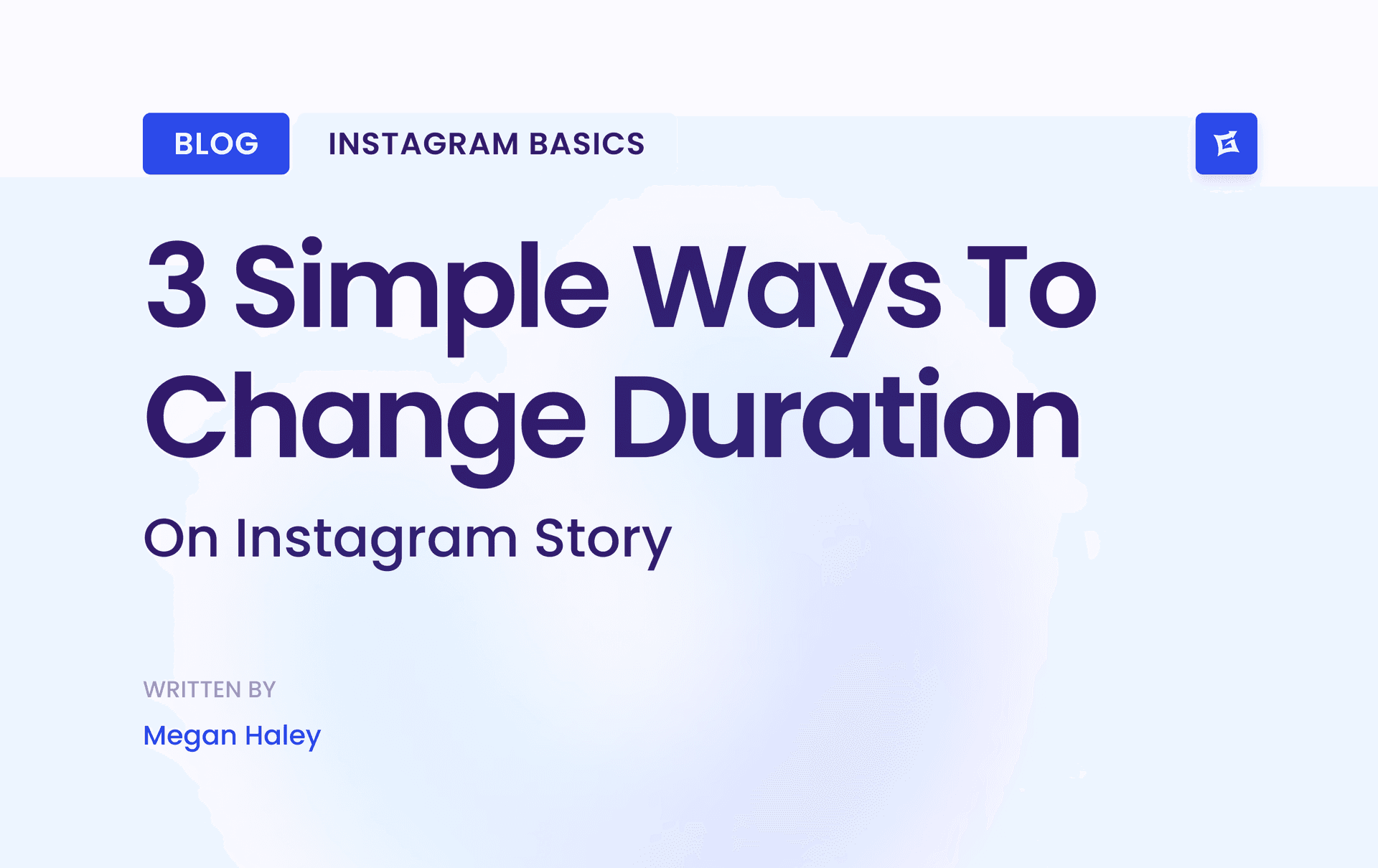
.png&w=1920&q=75&dpl=dpl_9XSWKBjhcBN6v6b1SN7m3p1WWjfr)
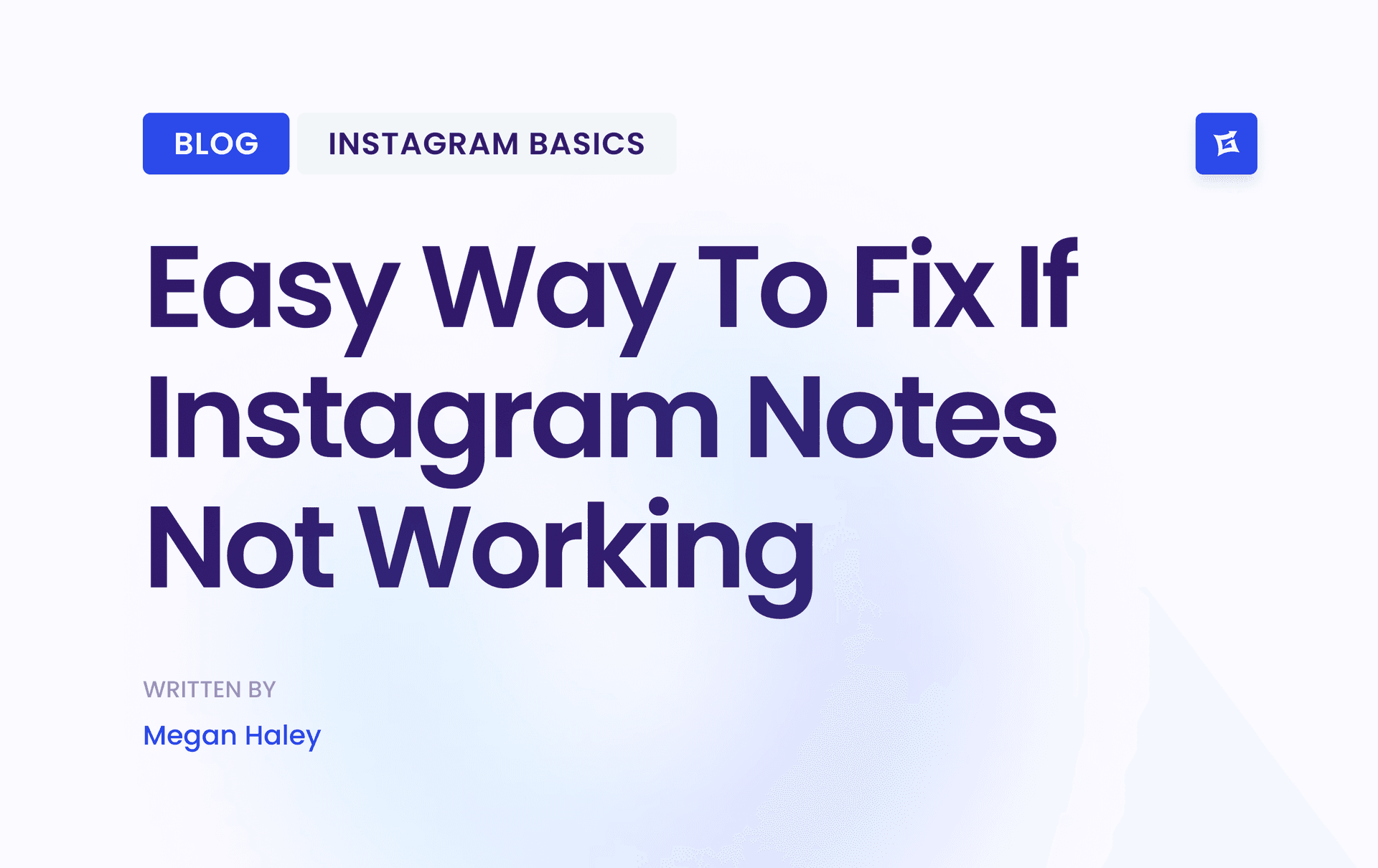
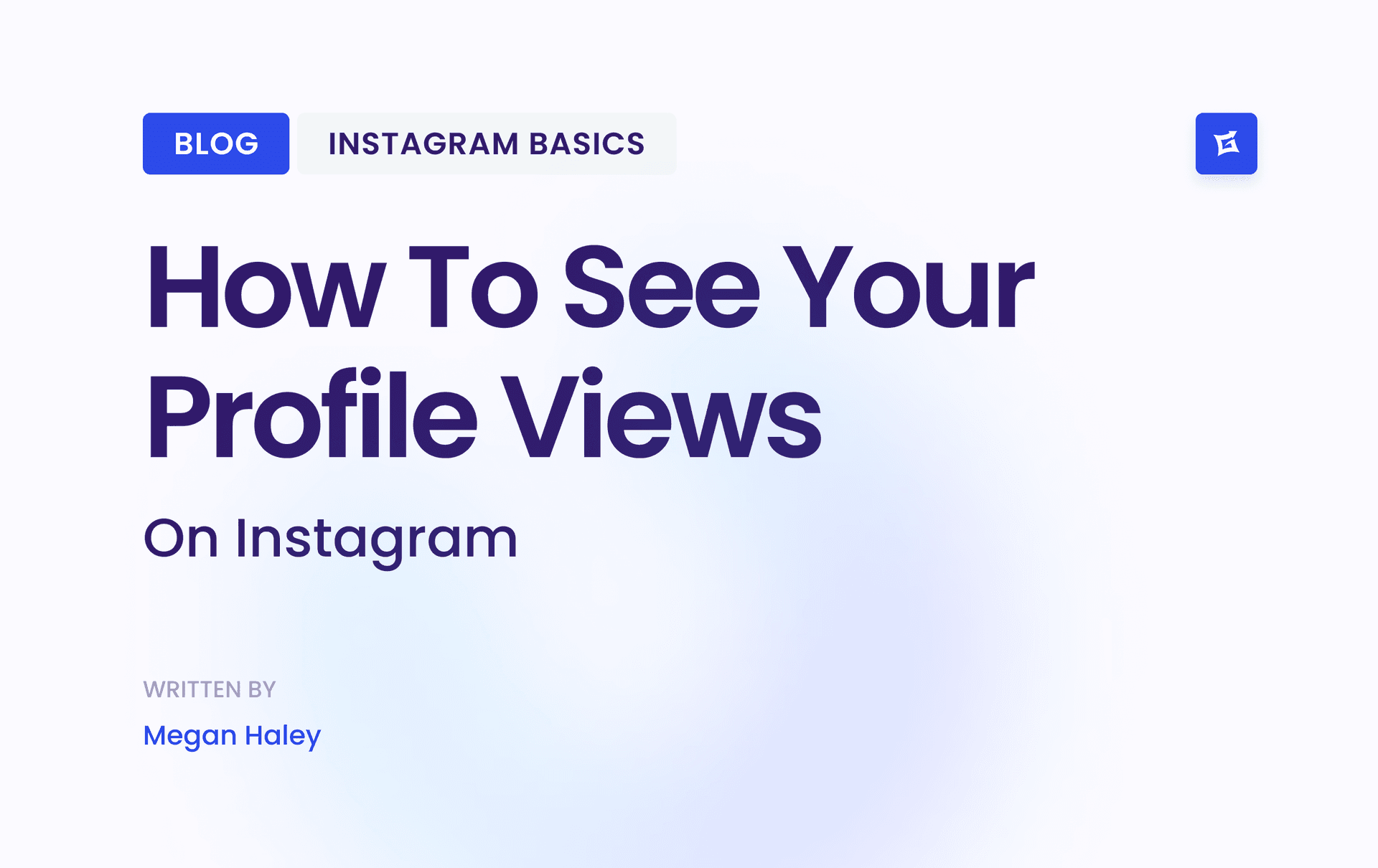
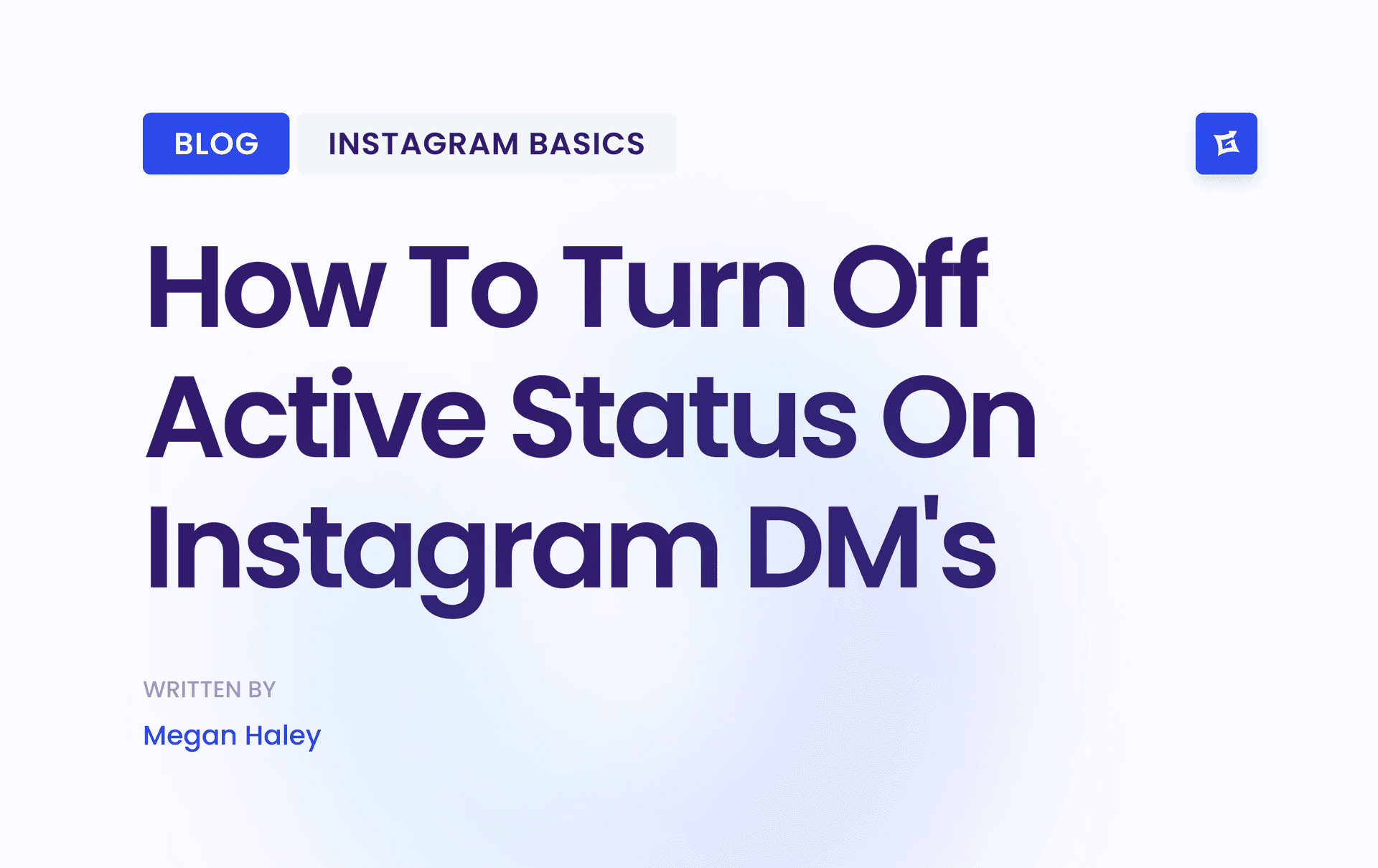
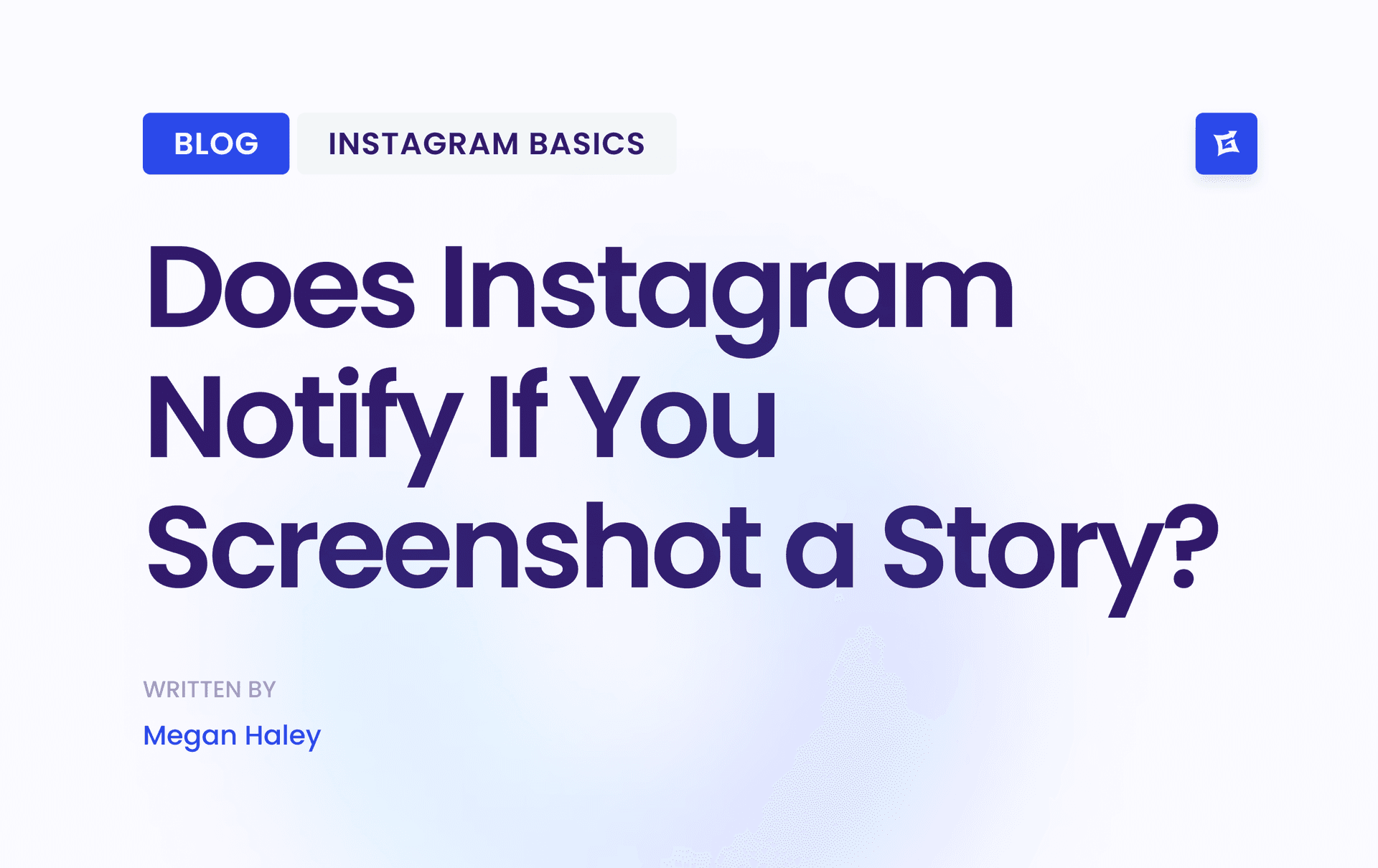



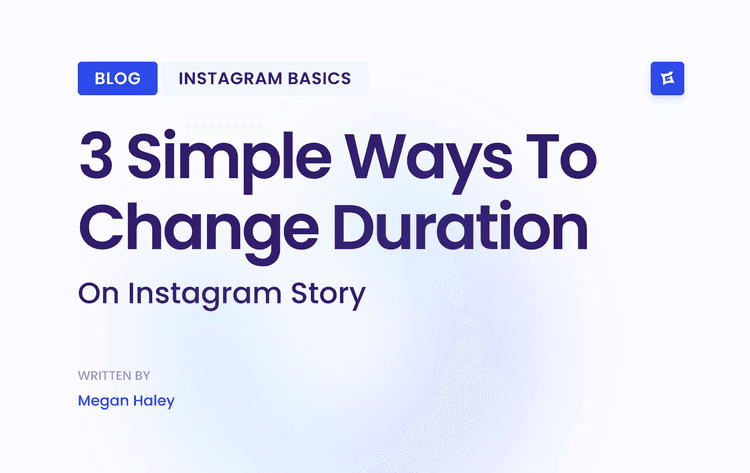
.png&w=750&q=75&dpl=dpl_9XSWKBjhcBN6v6b1SN7m3p1WWjfr)
